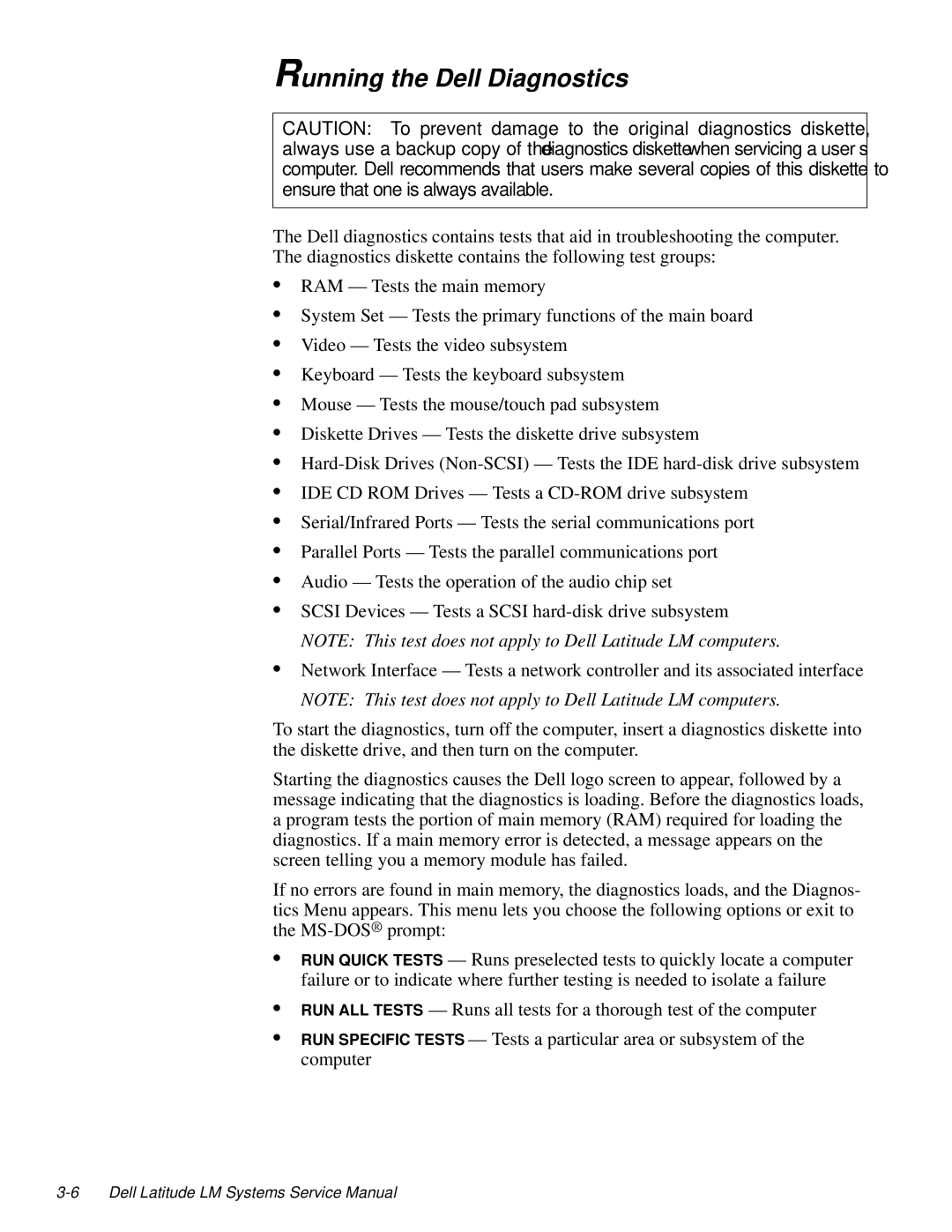
Running the Dell Diagnostics
CAUTION: To prevent damage to the original diagnostics diskette, always use a backup copy of the diagnostics diskette when servicing a user’s computer. Dell recommends that users make several copies of this diskette to ensure that one is always available.
The Dell diagnostics contains tests that aid in troubleshooting the computer. The diagnostics diskette contains the following test groups:
•RAM — Tests the main memory
•System Set — Tests the primary functions of the main board
•Video — Tests the video subsystem
•Keyboard — Tests the keyboard subsystem
•Mouse — Tests the mouse/touch pad subsystem
•Diskette Drives — Tests the diskette drive subsystem
•
•IDE CD ROM Drives — Tests a
•Serial/Infrared Ports — Tests the serial communications port
•Parallel Ports — Tests the parallel communications port
•Audio — Tests the operation of the audio chip set
•SCSI Devices — Tests a SCSI
NOTE: This test does not apply to Dell Latitude LM computers.
•Network Interface — Tests a network controller and its associated interface NOTE: This test does not apply to Dell Latitude LM computers.
To start the diagnostics, turn off the computer, insert a diagnostics diskette into the diskette drive, and then turn on the computer.
Starting the diagnostics causes the Dell logo screen to appear, followed by a message indicating that the diagnostics is loading. Before the diagnostics loads, a program tests the portion of main memory (RAM) required for loading the diagnostics. If a main memory error is detected, a message appears on the screen telling you a memory module has failed.
If no errors are found in main memory, the diagnostics loads, and the Diagnos- tics Menu appears. This menu lets you choose the following options or exit to the
•RUN QUICK TESTS — Runs preselected tests to quickly locate a computer failure or to indicate where further testing is needed to isolate a failure
•RUN ALL TESTS — Runs all tests for a thorough test of the computer
•RUN SPECIFIC TESTS — Tests a particular area or subsystem of the computer
